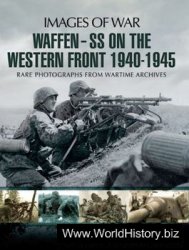TAN (TRANSPORTES AEREOS NACIONAL, S. A.) (1): Brazil (1946-1956). Two pilots, Manuel J. Antunes and Hilton Machado, form Nacional at Belo Horizonte in December 1946. Claudio Hoelck is named traffic manager, but he will come to play a more important role. Brazilian government operating permits are received on February 26, 1947 and the remainder of the year is spent in organization and fleet assemblage. With two Douglas DC-3s, the carrier inaugurates flights to Rio de Janeiro, Salvador, and Cuiaba in January 1948. Another DC-3 is acquired in 1949 and Sao Paulo becomes a scheduled destination.
Early in 1950, service is started to various inland destinations in the state of Bahia, including the northern city of Petrolina. Additionally, a frequency is launched via Januaria to Salvador. Antunes, Machado, and Hoelck now determine that the company should expand, not on its own, but through the creation of a consortium of airlines assembled with similar new entrants.
The first to join with TAN in late spring is VIABRAS (Viacao Aerea Brasil, S. A.). It is followed in August by the large Belo Horizonte-based air taxi operator OMTA (Organizacao Mineira de Transportes Aereos, S. A.). Providing services throughout Mato Grosso, Central Aerea, S. A. joins the consortium in October.
Following a year of integration in 1951, Nacional purchases VASD (Viacao Aerea Santos Dumont, S. A.) in April 1952, gaining the latter’s coastal route to Recife.
A DC-3 with 4 crew and 20 passengers is the victim of an in-flight explosion over Palmeira de Goias, Brazil, on August 12; there are no survivors.
The consortium is officially incorporated as the limited company Consorcio Nacional de Transportes Aereos, S. A. on November 20, 1953.
Meanwhile, the DC-3 fleet continues to grow, reaching a total of 20 early in 1954.
A navigational error takes a DC-3 with 3 crew and 16 passengers directly into Cipo Mountain, Brazil, on May 31; there are no survivors.
By the end of the year, 8 more Douglas transports have been acquired and the route network stretches for 20,000 unduplicated miles between 74 Brazilian destinations.
The all-cargo airline Itau (Companhia Itau de Transportes Aereos,
S. A.) is purchased and merged in October 1955, along with its surviving fleet of 5 Curtiss C-46 Commandos. Early in 1956, the Bahia State third-level carrier TAS (Transportes Aereos Salvador, S. A.) is acquired. Although its equipment prevents Nacional from entertaining the possibilities of international service, its growth has attracted considerable attention in the national airline community.
As a result, Linneu Gomes, CEO of REAL, S. A., finds Nacional a worthy acquisition, purchasing 85% controlling interest on August 2. Nacional is allowed to continue operations as an autonomous carrier during a two-year integration period, during which time its places into service six new Convair CV-440s.
TAN (TRANSPORTES AEREOS NACIONALES, S. A.) (2): Honduras (1947-1991). Americans Cornell N. (“C. N.”) Shelton and R. C. Forsblade join local rancher Miguel Brooks in setting up TAN at Tegucigalpa in August 1947; initial capitalization from the latter is $159,000. After acquiring a converted Douglas B-18 bomber and two Curtiss C-46s, the carrier begins twice-weekly charters to Miami and Cuba on behalf of the Inter-American Affairs Institute.
A three-year foreign air carrier permit is received from the U. S. CAB on June 12, 1950, allowing the ad hoc service to be scheduled regularly for both freight and passengers. Two more C-46s enter service.
During 1951-1953, San Pedro Sula joins Tegucigalpa as an incountry terminus and direct flights are begun to Managua, Belize City, and Guatemala City. Using a loophole in Ecuadorian law to circumvent the normal understanding of Fifth Freedom rights, TAN, in June 1954, begins simply flying over Honduras to Managua before flying on to Lima via Guayaquil.
By March 1956, the carrier’s Miami-South America traffic has increased 10-fold since 1953.
As part of the conditions for renewing TAN’s Miami concession in 1957, the CAB requires the carrier to terminate at least one leg of its service in Honduras. There is also much discussion concerning the actual ownership of the airline, with considerable suspicion that Miguel Brooks is simply serving as a front for Shelton.
As a result of the U. S. government ruling, C. N. Shelton now not only avoids stopping in Honduras by forming partnerships with the new Peruvian carrier APSA (Aerolineas Peruanas, S. A.) and the fresh Ecuadorian entrant CEA (Compania Ecuatoriana de Aviacion, S. A.), but convinces them to join him as a consortium in discount competition against American companies.
By June 17 when APSA starts flying to Santiago, Chile, Shelton’s group is effectively able to offer through-service from the tip of South America all the way up to Florida. Services and frequencies are expanded in 1958-1959.
TAN-APSA interchange service ceases on September 1, 1960 when APSA begins flying to Miami under authority of its own CAB permit. Still, TAN prospers, introducing DC-6As in 1961. The company’s interest in CEA (Compania Ecuatoriana de Aviacion, S. A.) is sold in 1963.
When Shelton dies in March 1965, the carrier passes to his daughter, Mrs. Patricia S. Spohrer of Miami, who holds a dual U. S./Honduran citizenship. The cofounder’s story will be told about 15 years later by Philip Schleit in his Shelton's Barefoot Airlines (Annapolis, Md.: Fish-ergate Publishing, 1982).
Operations continue apace in 1966 and on February 20, 1967, a DC-6B with 48 aboard crashes on the Tegucigalpa Airport runway (4 dead). The great north-south consortium fades during the late 1960s.
On January 21, 1970, TAN purchases the last 38% shareholding of Pan American World Airways (1) in SAHSA (Servicio Aereo de Honduras, S. A.). The shareholding leads to a close relationship between the nation’s two major airlines.
At the beginning of 1971, two Lockheed L-188A Electras, converted to L-188AF freighter status, are purchased, one had originally been operated by Braniff International Airways and the other by Eastern Air Lines. Services continue in 1972.
A DC-6A with three crew on approach to the airport at Tegucigalpa on January 27, 1973, crashes 10 mi. N of the runway and bursts into flames; there are no survivors.
The first jetliner, a Boeing 737-2A3 purchased from PLUNA (Primera Uruguayas de Navegacion Aerea, S. A.), is delivered in May 1974. The Honduran city of La Ceiba now adds a third point to the domestic route network as frequencies are maintained in 1975-1977.
During 1978, President General O. Lopez Arellano’s 400-employee company owns a fleet comprising 1 B-737-2A3,2 L-188AFs, and 1 DC-6B. In April 1980, a legitimate Fifth Freedom CAB concession is awarded for an all-cargo route to and through Belize City. This is flown by a Lockheed L-188, leased from SAHSA (Servicio Aereo de Honduras, S. A.). There are no significant changes in 1981-1984.
By 1985, daily flights are offered between Tegucigalpa and San Pedro Sula and Miami by both the company’s B-737-2A3 and the SAHSA (Servicio Aereo de Honduras, S. A.) B-727-81 under contract. In 1988, the company reports that during the first 6 months it has transported a total of 74,409 passengers and 599,000 FTKs.
In 1989, control is purchased by TAN; however, the two airlines integrate under the single title TAN-SAHSAAirlines, S. A. Leonel Lopez is named general manager and the B-727-81 is sold.
A B-727-224 is acquired, but while preparing to land at Tegucigalpa, Honduras, in high winds and low clouds on October 21, the trijet, with 8 crew and 138 passengers flies into a mountain 15 km. S of its destination and explodes (127 dead).
While on initial approach to Tegucigalpa on a March 21, 1990, allcargo service from San Pedro Sula, an L-188CF with three crew in poor visibility, crashes into the southern slope of Cerro Hula at 2,500 ft.; there are no survivors.
Two B-737-4Y0s, leased from GPA Group, are delivered during the summer.
A drop in traffic forces the airline, in May 1991, to return the two B-737-4Y0s to GPA Group and put a hold on a third requested for delivery later in the year. At this point, an L-188AF is chartered from SAHSA. On November 1, the carriers are integrated under the SAHSA (Servicio Aereo de Honduras, S. A.) name. The L-188AF that TAN had leased the previous year is withdrawn from service in mid-1992.
TAN (TRANSPORTES AEREOS NEUQUEN, S. A.):Diagonal 25 de Mayo 180, Neuquen, 8300, Argentina; Phone 54 (99) 488 927; Fax 54 (99) 466 418; Http://www. tan. com. ar; Code TB; Year Founded 1972. In order to replace the tax-supported provincial government air ambulance, mail, cargo, and passenger services provided in the region since 1960, TAN is created at Neuquen in the southwestern part of Argentina on May 26, 1972. Equipped with 3 Piper PA-31-310 Navajos, the third-level commuter undertakes scheduled flights linking Neuquen with Chapelco, Caviahue, and Chos Malal. The Pipers are replaced by 3 Rockwell Aero Commander 690s and services are maintained during the remainder of the decade and into the 1980s.
By 1983, the carrier has added additional destinations, including Zapala, and increased its fleet through the acquisition of two Swearingen Metro Ils. Able to survive the ups and downs of the turbulent economy of the late 1980s, President Cesar Jose Gazzera’s fleet in 1989 consists of 2 Rockwell Commander 690Bs, 1 SAAB 340A, and 2 Metro Ills.
There is a significant enhancement in service during the early 1990s as the company begins to replace the frequencies suspended by LADE (Lin-eas Aereas del Estado). In 1992, a third Metro III is acquired and the route network stretches up from Bariloche and Esquel via Mendoza to Cordoba and to the coastal cities of Bahia Blanca and Comodoro Rivadavia.
Cesar Jose Gazzera remains president in 1993 and through the first 6 months, enplanements total 44,221. Passenger boardings decline in 1994, falling by 12.6% through July to 39,273.
The workforce stands at 115 in 1995. Destinations visited include Buenos Aires, Bahia Blanca, Chos Malal, Comodoro Rivadavia, Cordoba, Cutral Co, Malarque, Mar del Plato, Medellin, Puerto Deseado, Puerto Monti, Rincon de los Sauces, Rio Gallegos, Rio Grande, San Carlos de Bariloche, San Martin de Los Andes, Temuco, and Trelew.
Traffic figures are only reported through the first quarter and show enplanements of 23,452 for the period.
The fleet in 1996-1999 includes 2 owned Rockwell Commander 690Bs and 3 Swearingen SA-227 Metro IIIs, plus 2 leased SAAB 340As. Destinations visited include Bahia Blanca, Balmaceda, Chapelco, Chos Malal, Comodoro Rivadavia, Concepcion, Cordoba, Mendoza, Puerto Montt, Rincon de los Sauces, Temuco, and Trelew.
During these years, majority control is acquired by VASP Brasilian Airlines (Viaceo Aerea Sao Paulo, S. A.).
Having fallen on hard times financially, VASP is forced to sell its TAN shares in October 2000.
TAN-SAHSA AIRLINES, S. A. See SAHSA (SERVICIO AEREO DE HONDURAS, S. A.); TAN (TRANSPORTES AEREOS NA-CIONALES, S. A.)




 World History
World History









